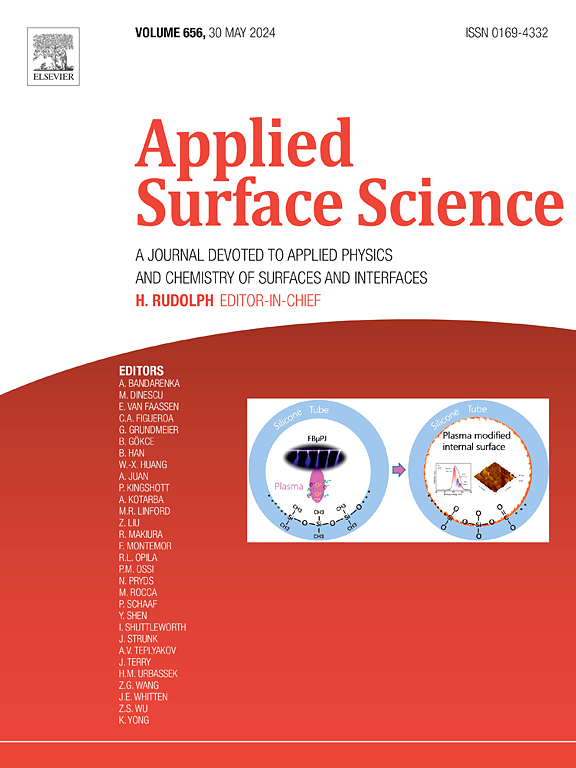First-principles insights into the incorporation of arsenic in BaSi2 thin films grown by molecular beam epitaxy
IF 6.3
2区 材料科学
Q2 CHEMISTRY, PHYSICAL
引用次数: 0
Abstract
Barium disilicide (BaSi2) is one of the promising non-toxic and abundant materials for thin-film solar cells. However, defective n-type BaSi2 layers hinder BaSi2 homojunction solar cells from achieving higher conversion efficiencies. In recent years, in situ doping of arsenic (As) has been investigated to form n-type BaSi2 layers. However, a-axis-oriented As-doped BaSi2 epitaxial layers grown by molecular beam epitaxy (MBE) have a low electron concentration. The donor activation of As-doped BaSi2 layers grown by MBE was then evaluated. The highest donor activation ratio in this study was found to be approximately 14%. To clarify the reason for this, we used first-principles calculations to evaluate the adsorption of As2 used in the MBE growth on BaSi2 (1 0 0) surface and the As-related defects in bulk BaSi2. The calculations reveal that adsorbed As2 tend not to dissociate into singular As adatoms. Furthermore, the 2 AsSi defect complex, which has the lowest formation energy compared to other As-related defects, was found to deactivate the donor based on its electronic structure. This study provides valuable insight into donor deactivation in As-doped BaSi2 layers and serves as a starting point for future investigations on how to control it.

分子束外延生长BaSi2薄膜中砷掺入的第一性原理研究
二硅化钡(BaSi2)是一种很有前途的无毒且储量丰富的薄膜太阳能电池材料。然而,有缺陷的n型BaSi2层阻碍了BaSi2同质结太阳能电池获得更高的转换效率。近年来,人们研究了原位掺杂砷(As)以形成n型BaSi2层。然而,通过分子束外延(MBE)生长的a轴取向砷掺杂BaSi2外延层具有较低的电子浓度。然后评估了MBE生长的砷掺杂BaSi2层的供体活化。在本研究中发现最高的供体激活率约为14%。为了澄清这一原因,我们使用第一性原理计算来评估在BaSi2(1 0 0)表面上MBE生长中As2的吸附以及大块BaSi2中与As2相关的缺陷。计算表明,吸附的As2倾向于不解离成单一的As原子。此外,与其他砷相关缺陷相比,2assi缺陷复合物具有最低的形成能,根据其电子结构发现它使供体失活。这项研究为砷掺杂BaSi2层的供体失活提供了有价值的见解,并为未来如何控制它的研究提供了起点。
本文章由计算机程序翻译,如有差异,请以英文原文为准。
求助全文
约1分钟内获得全文
求助全文
来源期刊

Applied Surface Science
工程技术-材料科学:膜
CiteScore
12.50
自引率
7.50%
发文量
3393
审稿时长
67 days
期刊介绍:
Applied Surface Science covers topics contributing to a better understanding of surfaces, interfaces, nanostructures and their applications. The journal is concerned with scientific research on the atomic and molecular level of material properties determined with specific surface analytical techniques and/or computational methods, as well as the processing of such structures.
 求助内容:
求助内容: 应助结果提醒方式:
应助结果提醒方式:


